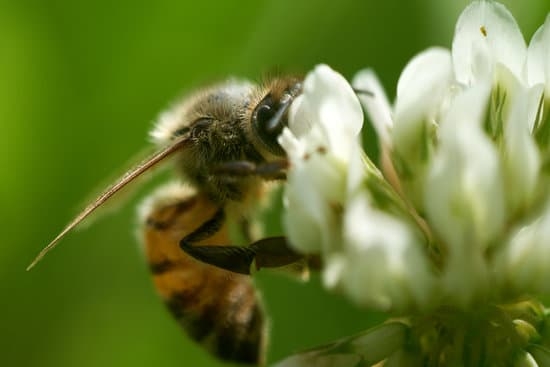A well-maintained garden can enhance the beauty of any home, but for busy homeowners, keeping up with the constant maintenance can be a challenge. This is where the concept of low maintenance gardens comes in handy, offering practical solutions to enjoy a beautiful outdoor space without the need for constant upkeep.
In this article, we will explore various ideas and tips for creating a low maintenance garden that is both aesthetically pleasing and easy to care for. Whether you have a green thumb or struggle to keep plants alive, there are strategies that can work for everyone interested in gardens low maintenance ideas.
One key aspect of low maintenance gardening is choosing the right plants that require minimal care and attention. By selecting varieties that are well-suited to your climate and soil conditions, you can reduce the amount of time and effort needed to keep your garden thriving.
Additionally, incorporating perennial plants into your garden design can provide long-term success, as these plants return year after year with minimal intervention. This not only saves time but also reduces the need for replanting and refreshing your garden regularly.
In addition to plant selection, utilizing mulch and weed barriers can significantly minimize the amount of maintenance required in your garden. Mulch helps conserve moisture in the soil, suppresses weeds, and adds an attractive finishing touch to your landscape.
Pairing this with smart irrigation systems that save time and water can further simplify gardening tasks. By following these low maintenance gardening ideas, homeowners can create a beautiful outdoor oasis that requires less time and effort to maintain, allowing them to enjoy their gardens without feeling overwhelmed by upkeep demands.
Choosing the Right Plants for Low Maintenance Gardening
In addition, opting for drought-resistant plants can significantly reduce the need for constant watering, saving you time and resources in the long run. Some popular low maintenance plant options include succulents, lavender, ornamental grasses, and perennial flowers like coneflowers and black-eyed susans. These plants not only add visual interest to your garden but also require minimal upkeep once established.
Furthermore, incorporating a variety of evergreen plants can help maintain some greenery in your garden throughout the year without the need for seasonal replanting. Evergreens like boxwoods, hollies, and junipers provide year-round foliage and structure, reducing the amount of work required to keep your garden looking vibrant.
By carefully selecting the right mix of plants based on your climate and preferences, you can create a beautiful low maintenance garden that brings joy without demanding too much time and effort on your part.
| Low Maintenance Plants | Benefits |
|---|---|
| Succulents | Drought-resistant and visually appealing |
| Lavender | Fragrant blooms that attract pollinators |
| Ornamental Grasses | Add texture and movement to the garden |
Incorporating Perennial Plants for Long-Term Success
Incorporating perennial plants into your garden is a fantastic way to ensure long-term success with minimal maintenance. Perennials are plants that come back year after year, reducing the need for replanting and saving you time and effort. These plants also tend to require less water and fertilizer compared to annuals, making them a great choice for a low maintenance garden.
When choosing perennial plants for your garden, opt for varieties that are well-suited to your climate and soil type. Native perennials are often a good choice as they are adapted to the local conditions and require less intervention from you. Additionally, consider selecting a mix of flowering perennials that bloom at different times throughout the year to keep your garden looking vibrant and colorful with minimal effort.
One of the key benefits of incorporating perennial plants into your low maintenance garden is their ability to attract pollinators such as bees and butterflies. By including pollinator-friendly perennials in your garden, you can create a thriving ecosystem that helps support local wildlife and promotes biodiversity. Not only does this add visual interest to your garden, but it also contributes to the overall health of your outdoor space.
| Perennial Plants Benefits | Low Maintenance Tips |
|---|---|
| Attract pollinators like bees and butterflies | Choose native perennial plants |
| Require less water and fertilizer than annuals | Select varieties suited to your climate |
| Provide long-lasting blooms year after year | Mix flowering perennials for continuous color |
Utilizing Mulch and Weed Barriers to Minimize Maintenance
Mulch and weed barriers are essential components of a low maintenance garden, helping to reduce the time and effort required for upkeep. By choosing the right materials and applying them effectively, homeowners can create a landscape that is not only beautiful but also easy to maintain. Here are some ideas on how to utilize mulch and weed barriers in your garden:
- Choose organic mulch such as compost, wood chips, or straw to enrich the soil and suppress weed growth naturally. This not only saves time on weeding but also improves the overall health of your plants.
- Consider using landscape fabric or plastic sheeting as weed barriers in areas where you want to prevent weed growth entirely. These materials block sunlight and oxygen from reaching the soil, inhibiting weed seeds from sprouting.
- Layer mulch at least 2-4 inches thick around plants and in between rows to help retain moisture, regulate soil temperature, and improve overall plant health. This reduces the need for frequent watering and helps minimize maintenance tasks.
In addition to these practical benefits, mulch and weed barriers can also enhance the aesthetics of your garden by creating a neat and tidy appearance. They provide a cohesive look to your landscape while keeping weeds at bay, allowing you to spend more time enjoying your outdoor space rather than working on it. By implementing these low maintenance ideas in your garden, you can create a thriving environment with minimal effort required.
Smart Irrigation Systems to Save Time and Water
Benefits of Smart Irrigation Systems
One of the key components of a low maintenance garden is efficient watering, and smart irrigation systems are a game-changer in this aspect. These systems use advanced technology to ensure that your plants receive the right amount of water at the right time, saving you both time and water. By incorporating moisture sensors, weather data, and programmable controllers, smart irrigation systems can adjust watering schedules based on real-time conditions, preventing overwatering or underwatering.
Types of Smart Irrigation Systems
There are various types of smart irrigation systems available on the market to suit different garden sizes and needs. Drip irrigation systems deliver water directly to the base of plants, minimizing evaporation and runoff.
Wi-Fi-enabled controllers allow you to remotely access your irrigation system through a smartphone app, making it convenient to monitor and adjust watering schedules even when you’re not at home. Weather-based irrigation controllers use local weather data to automatically adjust watering times based on temperature, humidity, and rainfall forecasts.
Installation and Maintenance Tips
When installing a smart irrigation system for your low maintenance garden, it’s essential to follow manufacturer instructions carefully to ensure proper functioning. Position moisture sensors in different areas of your garden to accurately measure soil moisture levels and avoid placing them near paved surfaces or under overhangs where they might not reflect actual conditions.
Regularly check for clogged emitters or damaged tubing in drip irrigation systems, and replace batteries in Wi-Fi controllers as needed to maintain optimal performance. With a smart irrigation system in place, you can enjoy lush garden landscapes while conserving water resources and freeing up time for other activities.
Designing a Low Maintenance Landscape Layout
- Create defined areas: Divide your garden into different zones based on the amount of sunlight, water requirements, and maintenance needs of plants. This will help you easily identify where to focus your efforts and resources.
- Group similar plants together: Organize plants with similar watering and sunlight needs in the same area to streamline maintenance tasks. This will make it easier to water, fertilize, and prune plants effectively.
- Use native plants: Incorporating native plants in your landscape layout can reduce the need for excessive watering, fertilizing, and pest control measures. Native plants are well-adapted to the local climate and soil conditions, making them more resilient and less demanding in terms of care.
By following these design principles, you can create a low maintenance landscape layout that not only looks aesthetically pleasing but also minimizes the time and effort needed to keep it looking its best. With thoughtful planning and strategic plant selection, you can enjoy a beautiful garden with minimal upkeep requirements.
Implementing Edging and Borders for a Polished Look
When it comes to creating a low maintenance garden, implementing edging and borders can not only enhance the aesthetic appeal but also help in reducing the amount of time and effort required for upkeep. By defining the different areas of your garden with edging, you can prevent grass and weeds from encroaching on your flowerbeds or walkways. This not only creates a neat and organized look but also minimizes the need for frequent trimming and weeding.
There are various options available for edging materials, such as stones, bricks, metal or plastic strips, which offer both functionality and style to your garden. These edging materials can also serve as a barrier against invasive plants, keeping your low maintenance garden looking well-kept without much intervention. Additionally, adding borders around your flower beds or pathways can further enhance the overall design of your outdoor space while providing a clean and polished look.
Incorporating edging and borders into your garden design can also make maintenance tasks like mowing or trimming simpler and more efficient. By clearly defining the boundaries of different sections in your garden, you can easily navigate through the space with precision when it comes to grooming or tending to your plants. This structured approach not only saves time but also ensures that each area of your low maintenance garden receives the necessary care it needs for healthy growth and longevity.
Maintenance Tips for Keeping Your Low Maintenance Garden Thriving
Regular Weeding and Mulching
It may seem contradictory to talk about maintenance in a low maintenance garden, but a little effort goes a long way. Regular weeding is essential to prevent unwanted plants from taking over your garden and competing with your chosen low-maintenance plants for resources.
Applying mulch not only helps to suppress weeds but also retains moisture in the soil, reducing the need for frequent watering. Organic mulches like wood chips or straw can break down over time, adding nutrients to the soil.
Pruning and Deadheading
To keep your low maintenance garden looking neat and tidy, it’s important to prune and deadhead plants as needed. Removing dead or faded flowers not only improves the appearance of your garden but also encourages plants to produce more blooms. Pruning helps control the size and shape of shrubs and bushes, promoting healthy growth. Be sure to invest in quality pruning tools and familiarize yourself with the specific needs of each plant in your garden to ensure proper care.
Regular Inspections and Pest Control
Regular inspections of your low maintenance garden can help you identify any issues early on before they become major problems. Keep an eye out for signs of pest infestations, disease, or nutrient deficiencies in your plants.
Introducing beneficial insects, using organic pesticides sparingly, or employing physical barriers can help manage pests without resorting to harsh chemicals that can harm beneficial insects as well. By staying proactive in caring for your garden, you can enjoy a thriving outdoor space with minimal effort.
Conclusion
In conclusion, creating a low maintenance garden can provide numerous benefits for busy homeowners looking to enjoy a beautiful outdoor space without the stress of constant upkeep. By strategically choosing plants that require minimal care and incorporating time-saving techniques such as mulch and weed barriers, individuals can save both time and energy in maintaining their garden. Additionally, utilizing smart irrigation systems can ensure that water is used efficiently, further reducing the need for frequent watering.
Incorporating perennial plants into the garden design can also contribute to long-term success, as these plants typically require less attention and come back year after year. Designing a landscape layout that minimizes the need for regular pruning and trimming can further enhance the low maintenance aspect of the garden. Edging and borders can add a polished look to the garden while also helping to contain plants and reduce weed growth.
Overall, by following these gardens low maintenance ideas, homeowners can create a stunning outdoor space that not only enhances the beauty of their property but also allows them to spend more time enjoying their garden rather than constantly working on it. With proper planning and maintenance tips in place, anyone can achieve a thriving low maintenance garden that provides enjoyment for years to come.
Frequently Asked Questions
What Is the Easiest Garden to Maintain?
The easiest garden to maintain typically consists of native plants that are well-suited to the local climate and soil conditions. These plants require minimal watering, fertilizing, and pruning, making them perfect for busy or novice gardeners.
What Is the Most Low Maintenance Landscaping?
When it comes to low-maintenance landscaping, xeriscaping is often considered the most practical option. Xeriscaping involves using drought-tolerant plants, gravel, rocks, and mulch to create a water-efficient landscape that requires minimal upkeep. This type of landscaping is not only environmentally friendly but also easy to maintain.
What Are the Easiest Plants to Keep Alive in the Garden?
Some of the easiest plants to keep alive in the garden include succulents, such as aloe vera and jade plants, which require very little water and can thrive in dry conditions. Other low-maintenance options include herbs like mint and oregano, as well as perennial flowers like coneflowers and black-eyed Susans that are known for their hardiness and resilience.
By choosing these types of plants, you can enjoy a beautiful garden without spending too much time on maintenance tasks.

Welcome to my gardening blog! I am passionate about plants and enjoy sharing my knowledge and experiences with others. In this blog, I will write about everything related to gardening, from tips on how to get started to updates on my own garden projects.





